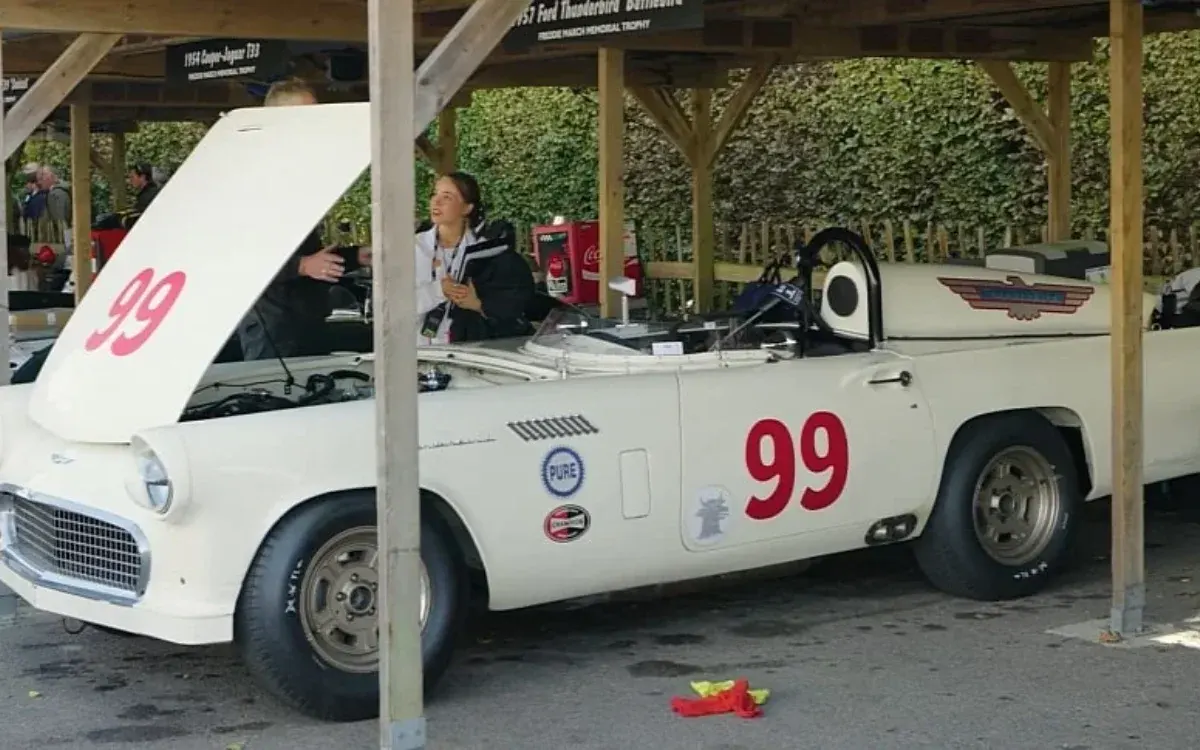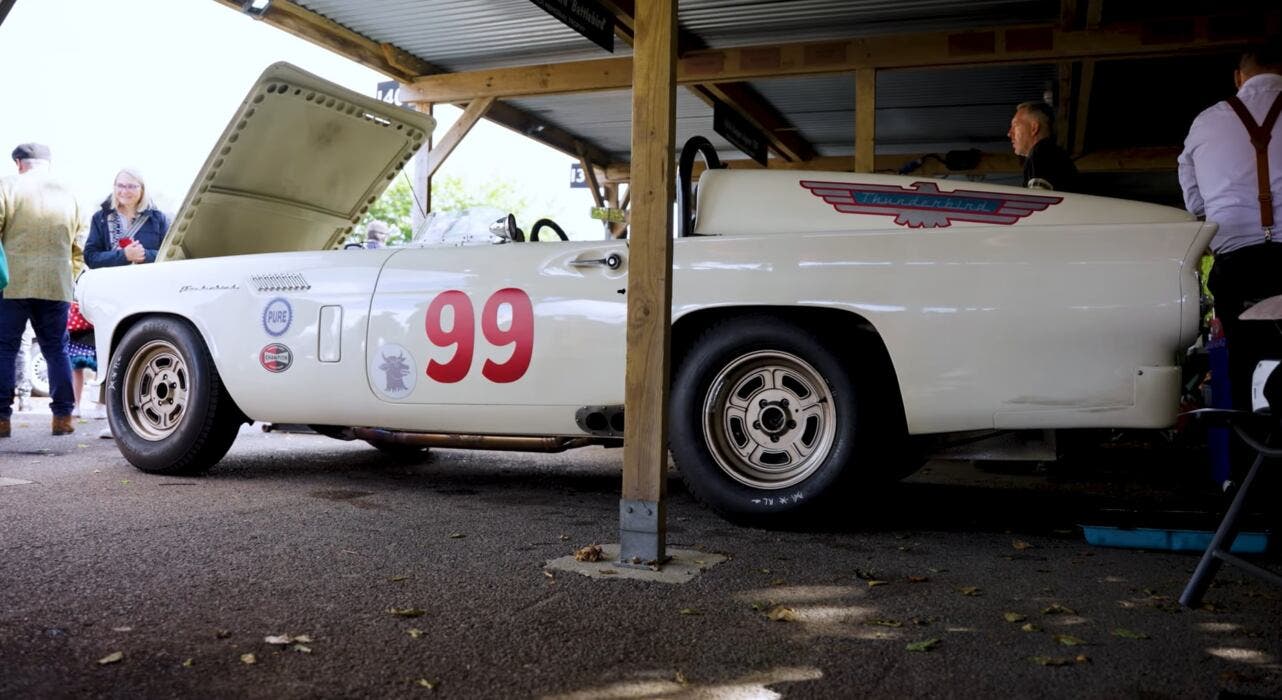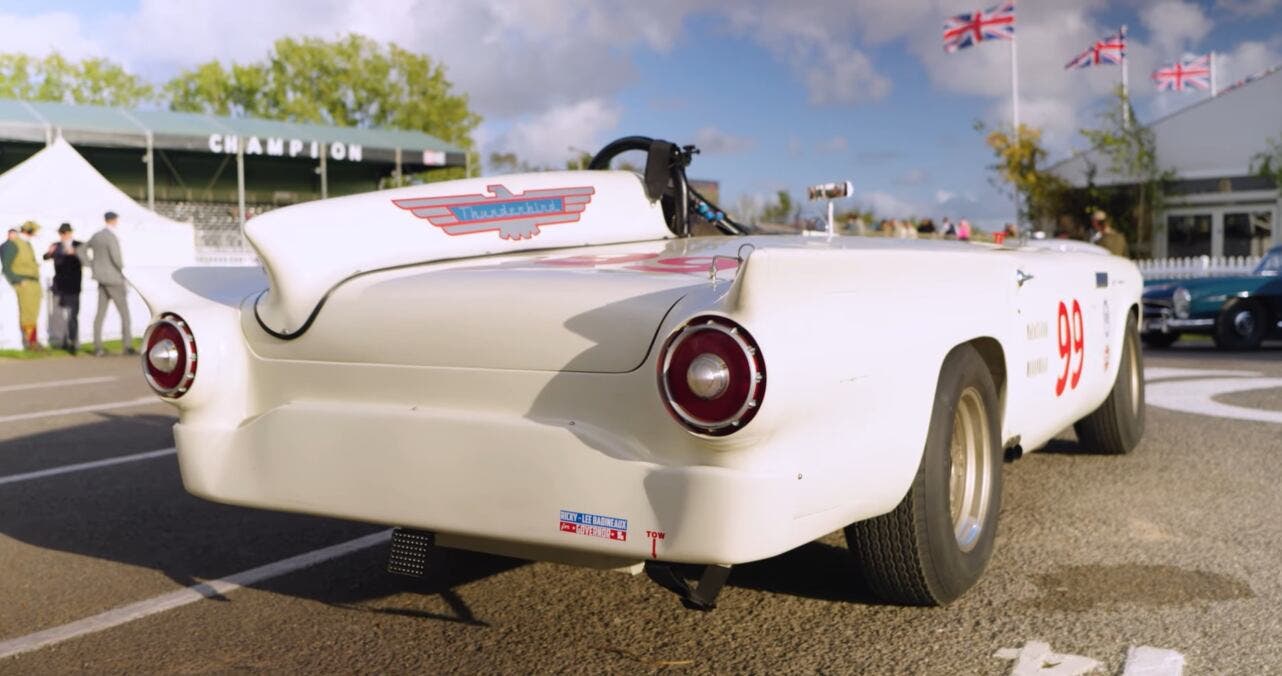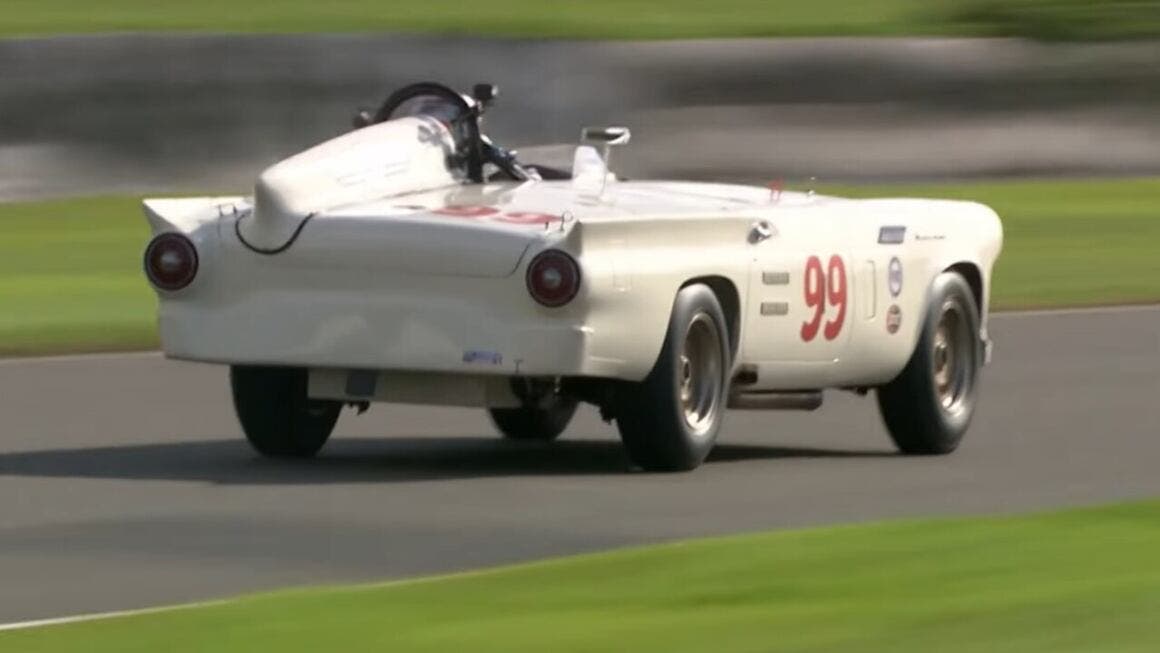In the golden age of American car excess Ford decided to take its elegant Thunderbird and turn it into a barely contained rocket. The result was the 1957 Battlebird, a name that sounds like a comic book hero and performed like one too, hitting an incredible 204 mph (328 km/h) on the sands of Daytona Beach.
Born from the luxurious 1955 Ford Thunderbird, the Battlebird was Ford’s not-so-subtle way of telling Chevrolet, “Your Corvette is cute, ours flies”. Ford commissioned a radical transformation for the Daytona Beach Speed Trials, an event where carmakers proved their worth by seeing how fast they could scare the seagulls off the beach.

The once-elegant Thunderbird was stripped of everything civil: a lightweight aluminum body, single-seat cockpit, a roll cage, and an aerodynamics package designed to slice through air like gossip in a Detroit lunchroom.

Two were built, one packing a tuned small-block V8, and the other an absurd 7.0-liter MEL V8 spitting out over 400 HP. In the Eisenhower era, that was enough muscle to make even a jet blush. The Battlebird dominated at Daytona, hitting a blistering 204 mph, faster than anything General Motors could muster. Sadly, a mechanical failure during the return run voided the record, leaving the Battlebird to live forever as a “what if” legend.

After 1960, the car disappeared. Some thought it was scrapped, others swore it had sunk into obscurity. Then, in 2016, a British collector stumbled upon it in tragic condition, half relic, half rust. After a meticulous restoration, the resurrected Battlebird returned to glory at Goodwood’s Festival of Speed in 2019, its white livery gleaming like a ghost from Detroit’s wildest decade.
Today, the Ford Battlebird remains a symbol of postwar American audacity, half luxury cruiser, half mechanical lunacy. It’s proof that once upon a time, Ford didn’t just build cars. It built fever dreams on wheels.
